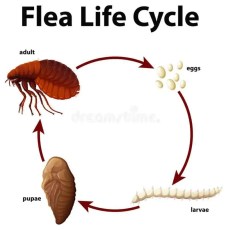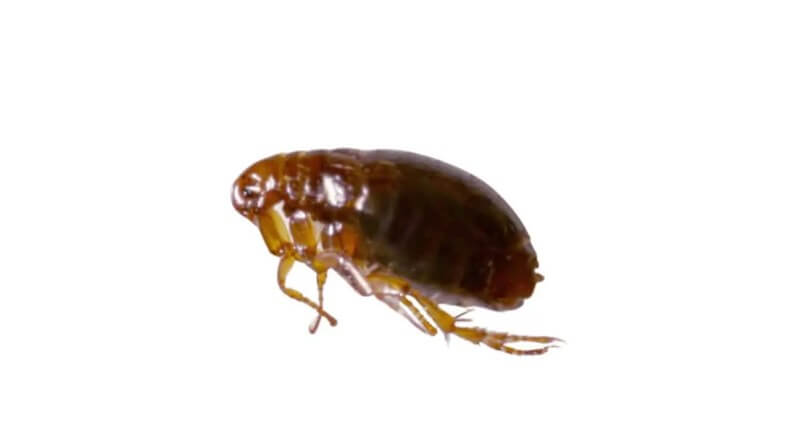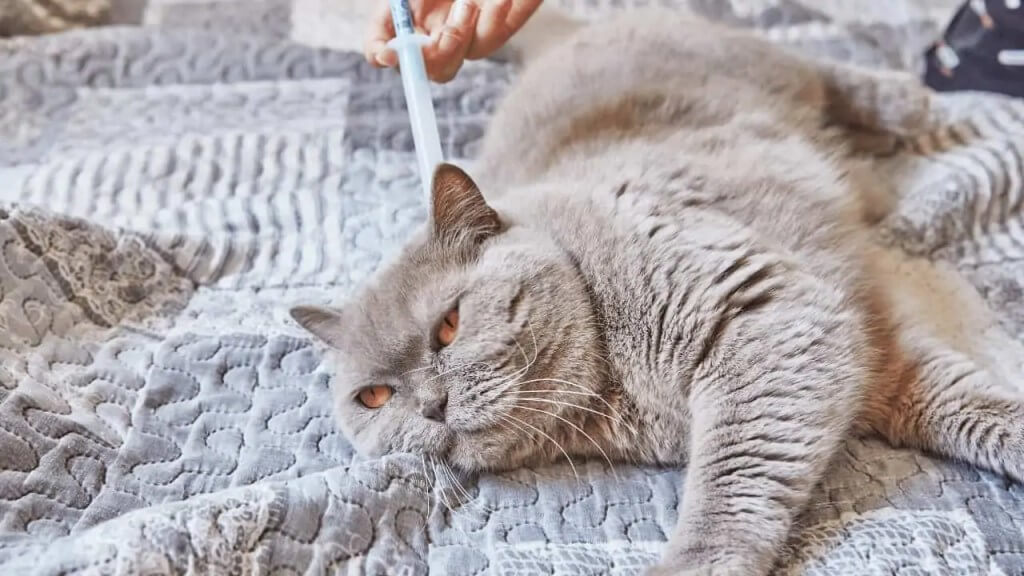Preventing Fleas and Ticks in Your Cat
 Fleas are among the most common health problems of dogs and cats. In the long run, cat flea and tick prevention it is much easier and more cost-effective to than to have to treat a major infestation of fleas in your house. Regular use of flea products will take care of the occasional flea your pets may encounter in the yard and should prevent you from having to spend large sums of money on foggers and exterminators. Treating a bad flea infestation in your house usually costs upwards of $150.
Fleas are among the most common health problems of dogs and cats. In the long run, cat flea and tick prevention it is much easier and more cost-effective to than to have to treat a major infestation of fleas in your house. Regular use of flea products will take care of the occasional flea your pets may encounter in the yard and should prevent you from having to spend large sums of money on foggers and exterminators. Treating a bad flea infestation in your house usually costs upwards of $150.
Fleas Can Cause Anemia in Cats
Fleas will bite your pets, causing an itchy allergic reaction, can become quite severe. They carry viral and bacterial diseases. In small animals, especially kittens, the anemia they cause from feeding on the animal’s blood can be fatal. They also carry tapeworms. Tapeworm segments appear on the stool or around the rectal area and look like small grains of rice. If your cat has fleas, chances are good he has tapeworms – and vice versa. Therefore, if your cat has fleas, we will deworm your cat for tapeworms along with beginning flea control measures.
Wildlife, as well as other cats and dogs, bring fleas into your yard. Pets and people can then bring the fleas into the house. Birds nesting in the attic or mice seeking shelter can also bring fleas into your home. Fleas also travel on their own as much as a mile an hour. They will hop inside through an open door or window and are often small enough to come through a window screen. Once inside your home, there is no place a flea cannot get to. Adult fleas spend most of their time on your pet, but the remainder of the time they are roaming your house and laying eggs – thousands of them!
 If you’ve never been lucky enough to see a flea, they are about 1/8 inch long, reddish-brown, and shaped like a sesame seed with legs. They are usually found on your pet’s head, belly, or lower back. If you ripple the hair backward and look at the skin they can be seen scurrying through the base of the hair coat. It is often difficult to find fleas on pets until they are infested heavily. This is especially true with cats who are meticulous groomers. It is more common to see the droppings they leave behind after feeding. They look like grains of pepper. If you place some of these on white paper toweling, wet it, and mush it around it will turn the toweling red. This is because flea droppings contain digested blood. Plain dirt stays black or gray when wet.
If you’ve never been lucky enough to see a flea, they are about 1/8 inch long, reddish-brown, and shaped like a sesame seed with legs. They are usually found on your pet’s head, belly, or lower back. If you ripple the hair backward and look at the skin they can be seen scurrying through the base of the hair coat. It is often difficult to find fleas on pets until they are infested heavily. This is especially true with cats who are meticulous groomers. It is more common to see the droppings they leave behind after feeding. They look like grains of pepper. If you place some of these on white paper toweling, wet it, and mush it around it will turn the toweling red. This is because flea droppings contain digested blood. Plain dirt stays black or gray when wet.
Cat Flea and Tick Prevention
Fleas can usually be prevented by treating all pets that go outdoors so they don’t bring reproducing fleas into the house. If you had fleas in previous years it is wise to spray some insecticide in the house as well, especially on the ground floor near doors and windows. This will kill the occasional flea that hops in on its own.

Use a Flea Prevention Product Vetted by Your Veterinarian
Many flea products sold in grocery and discount stores are wasting your time and money. Some are even harmful to pets. Most compounds strong enough to be effective are sold only through licensed veterinarians and exterminators, who are properly trained in their use, and are regulated by the state and the EPA. Insecticides should be used only according to label directions. Care is needed to ensure that toxicity does not develop due to the concurrent use of other drugs, pesticides or chemicals, or because the compound used was not safe for a particular age or type of animal. Some flea products used for dogs are deadly to cats. When it comes to cat flea and tick products, READ LABELS CAREFULLY!!!
Frontline Plus or Revolution
Most of our clients choose a long-lasting topical flea control product (Frontline Plus or Revolution) to use on their pet to control fleas. These products are applied to a small area of skin and spread over the whole pet within 24 hours of application. These contain modern polymers enabling them to be effective for as long as 60 days. If your cat goes outdoors we recommend it be used monthly. Frontline is even effective if the cat becomes wet or is bathed. Because the product requires the oils in the animal’s fur to spread, it is best to apply it several days prior to bathing your cat for maximum effect.
Many insecticidal flea collars available in stores are not very effective and often cause painful irritation to the skin on the pet’s neck. Flea shampoos and soaps are great for cleaning your cat with fleas but they have no residual effect. They only kill fleas present on the pet at the time the bath is given. As soon as the animal dries off, fleas will hop right back on. For long-term control, you need a product that safely stays in or on the body for days or weeks at a time.


